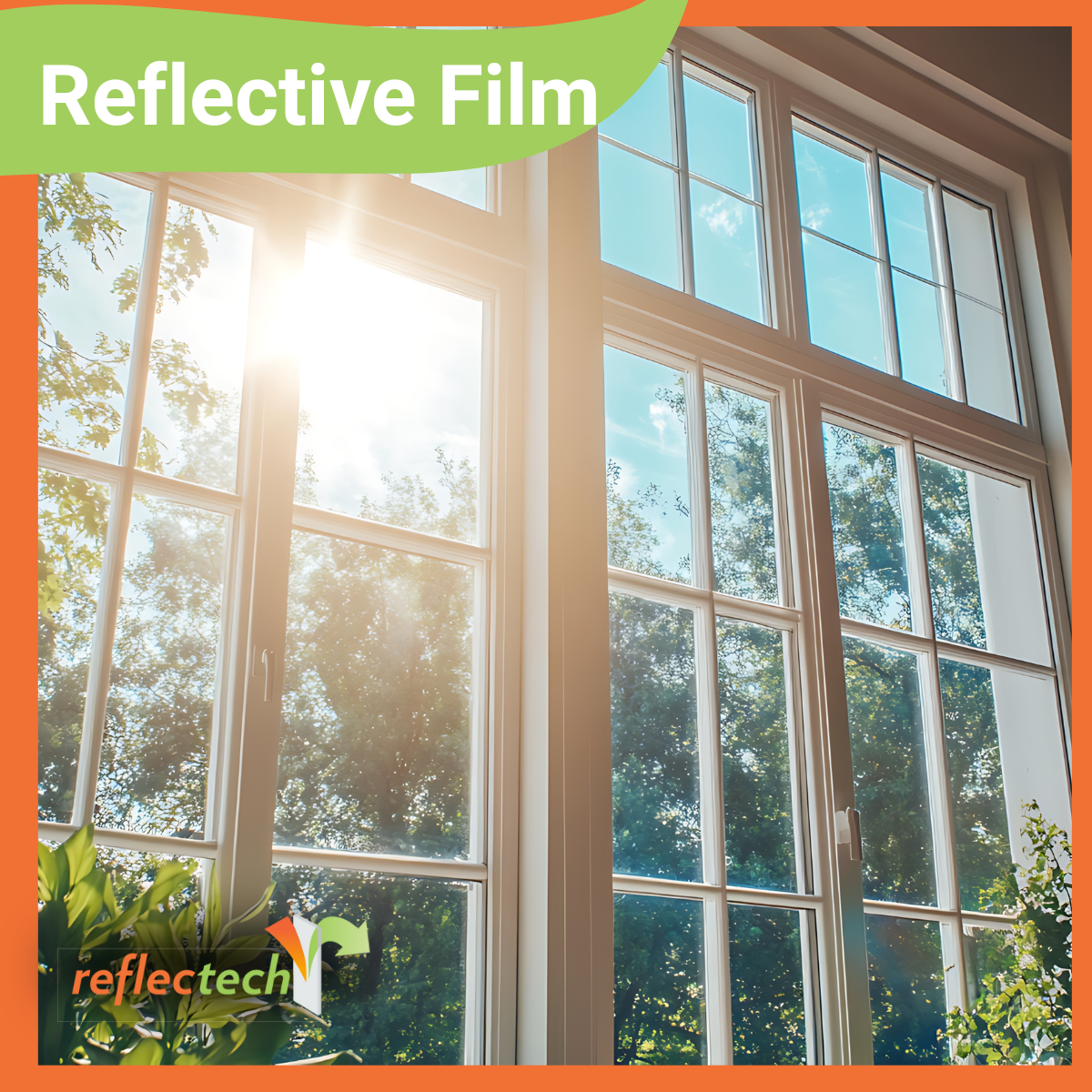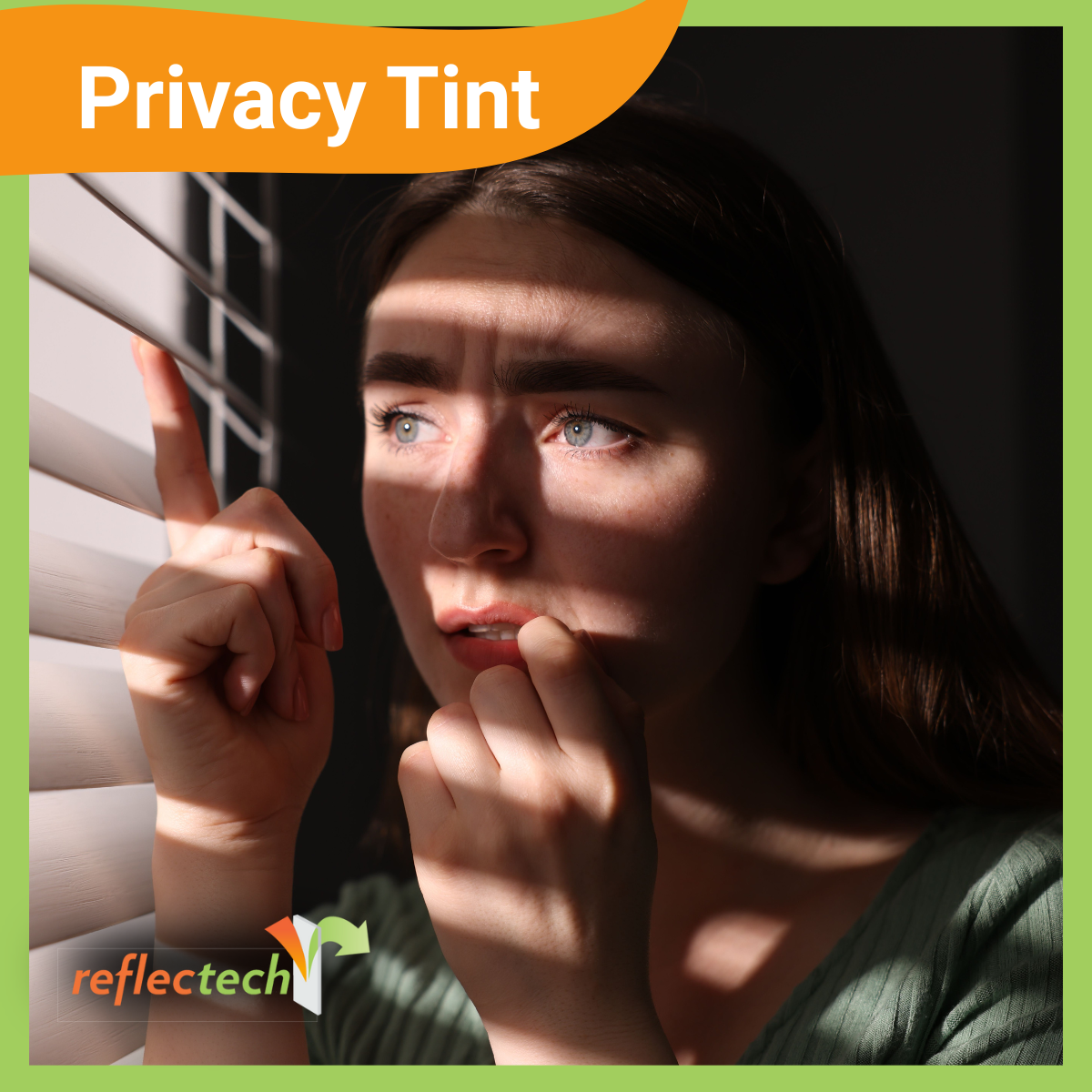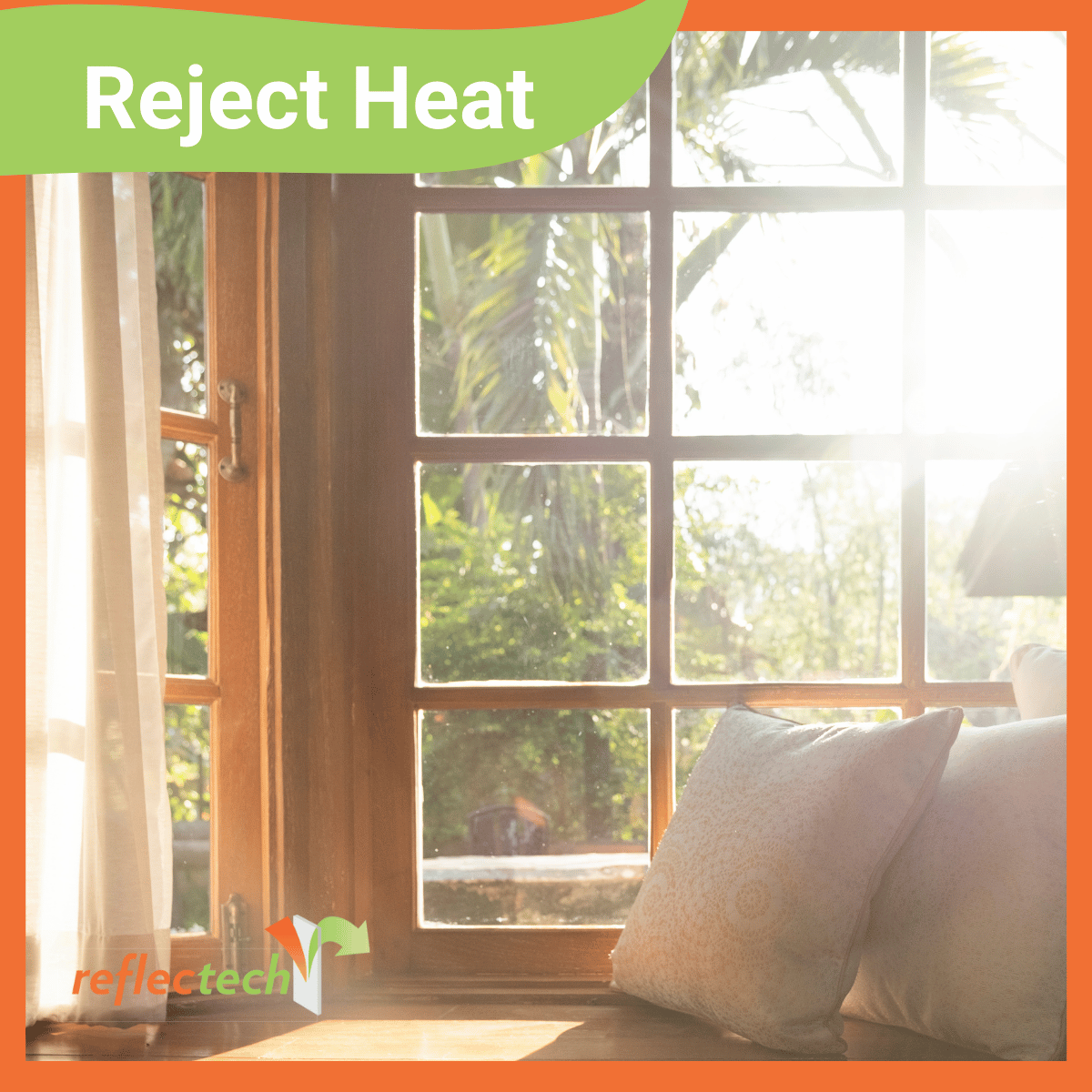
How does reflective window film help? Imagine this: you walk into your living room on a bright afternoon, and you have to squint. The sun bounces off the floor, the furniture looks washed out, and you can barely see your TV screen. You pull the curtains shut to block the glare—but now the room feels dark and closed in. Sound familiar?
That’s where Reflective Window Film steps in. It doesn’t just block the sun—it balances it. When reflectivity and light transmission are tuned just right, you gain comfort, privacy, and energy savings, all without sacrificing your view.
We’ve been helping people find that balance for over 30 years. And if there’s one thing experience has taught us, it’s this: no two spaces need the exact same film. Every window, every direction, every room has its own personality. The trick—and the reward—is finding the balance that makes your space feel “just right.”
Why People Choose Reflective Window Film
The first question we usually hear is simple: why reflective window film over other options?
Here’s why:
- Glare Control – Stop fighting with blinds or curtains just to see your screen.
- Heat Rejection – Keep the hot sun out and your cooling bills down. (Source: LLumar)
- Privacy – Enjoy your home or office without feeling like you’re on display.
- Consistent Exterior Look – Give your building a clean, uniform style.
And the best part? You get all of this while keeping your view. No heavy drapes, no dark cave feeling—just balanced light.
How Reflective Window Film Is Made
This part surprises people. Reflective Window Film isn’t just a dark sheet that sticks to glass. It’s carefully engineered.
Here’s the process:
- Clear Base – It starts with a thin, strong polyester film.
- Metal or Ceramic Layer – Manufacturers apply microscopic metal or ceramic particles. This layer is what reflects heat and light.
- Density Matters – The closer those particles are, the more reflectivity you get. But denser layers also let less visible light through. That’s why darker films feel dimmer.
- Protective Coating – To finish, they add scratch-resistant layers and adhesives so the film lasts on your windows.
It’s a clever mix of science and design. And it explains why finding the balance between reflectivity and visible light transmission (VLT) is so important. (Source: SunTek)
The Balance Between Reflectivity and Light
Here’s where most people get stuck. Should you go for high reflectivity? Or should you keep it lighter?
Think of it like sunglasses. Dark, mirrored shades cut the glare completely, but they also make the world look dim. Light shades let more brightness through but don’t block as much.
Reflective Window Film works the same way:
- High Reflectivity = Great for heat and glare, but rooms may feel darker.
- Lower Reflectivity = Brighter inside, but less heat rejection.
The reward comes from finding the sweet spot—enough reflectivity to stay comfortable, without making your home or office gloomy.
Why Reflective Window Film Samples Make All the Difference
On paper, films look straightforward. But the reality? The same film can look totally different once it’s on your glass.
Why? Because every space has its own conditions:
- A south-facing office gets slammed with afternoon sun.
- A north-facing bedroom may sit mostly in shade.
- A living room with light flooring reflects more brightness back inside than one with dark hardwood.
- A tall building surrounded by glass towers will reflect differently than a house beside trees.
That’s why we always use samples. We bring them to your space, place them on the actual windows, and let you see how they look in morning, midday, and evening light. You can compare side-by-side and feel the difference, not just read numbers.
After three decades, we can usually predict what will work—but nothing beats seeing it yourself.
Reflective Window Film and Exterior Style
Comfort inside matters, but you also care about how your home or building looks outside. Here’s something many people overlook: different reflectivity levels can make the exterior look patchy.
That’s why we carefully balance film choices across your whole project. For example:
- Sun-facing sides may get higher reflectivity for performance.
- Shaded sides may get lighter film to keep rooms bright.
- All sides keep the same tone so the exterior looks uniform.
The result? A building that looks sharp and consistent from the outside, while each room inside feels tailored to its needs.
Choosing the Right Tone
Reflectivity isn’t the only factor. Tone matters too. Modern Reflective Window Film comes in shades beyond the classic silver mirror:
- Neutral gray – Subtle, goes with anything.
- Bronze – Warm and inviting, often great for residential.
- Blue – Crisp and modern, suits certain architectural styles.
- Black/Gray – Strong, sleek look for bold designs.
Tone affects both the interior feel and the exterior style. For example, a bronze tint can warm up a space, while a gray keeps colors truer. (Source: 3M)
Room-by-Room Scenarios
To make it clearer, let’s walk through some everyday spaces:
Living Rooms
You want daylight, but not blinding glare. A moderate reflective film with neutral tone often works best. It keeps things bright, but comfortable.
Home Offices
Glare on screens is the enemy here. We often use higher reflectivity on sun-facing sides. On shaded sides, we keep it lighter for balance.
Bedrooms
For bedrooms, many people prefer a slightly darker film. It blocks early morning sun and keeps the room cooler at night.
Kitchens
Kitchens often benefit from lighter reflective film. You want it to feel open and bright, while still cutting heat from cooking and direct sun.
The goal is always the same: tailor each room while keeping the building’s outside look consistent.
Reflective Window Film Myths (and the Truths We’ve Seen)
Over the years, we’ve heard a lot of myths. Here are the most common:
- Myth: More reflectivity is always better.
Truth: Not always. Too much makes rooms feel dim. Balance matters more. - Myth: Reflective film always looks like a mirror.
Truth: Modern films come in subtle, natural tones that don’t scream “mirror.” (Source: Avery Dennison) - Myth: One film fits every window.
Truth: Different exposures often need different films. That’s why sampling is so important. - Myth: Films don’t last.
Truth: With quality products and professional installation, reflective films can last decades. (Source: Solar Gard)
Why Trust ReflecTech?
This is where our experience makes all the difference. We’ve worked with every type of building, every orientation, every quirky situation you can imagine. We know which films last, which tones suit which styles, and how to balance reflectivity so you get the best of both worlds.
Instead of sending you off to research brands and specs, we’ve already done that for you. We only carry films we trust—films that have proven themselves in real homes and businesses.
We also make the process easy:
- For small projects, we can provide virtual previews.
- For larger projects, we’ll come to you, measure for free, and set up samples on your actual windows.
That way, you don’t have to guess. You just see and feel the results before you decide.
The Sure Reward
At the end of the day, Reflective Window Film isn’t about percentages or spec sheets—it’s about how your space feels.
When you balance reflectivity right, you get:
- Rooms filled with comfortable light
- Lower bills from reduced heat gain
- Privacy when you want it
- A building that looks polished and uniform from outside
And the best part? You don’t have to figure out that balance on your own. With decades of experience, we guide you through every step so you end up with a result you love.
That’s the sure reward of reflective film done right.






Recent Comments